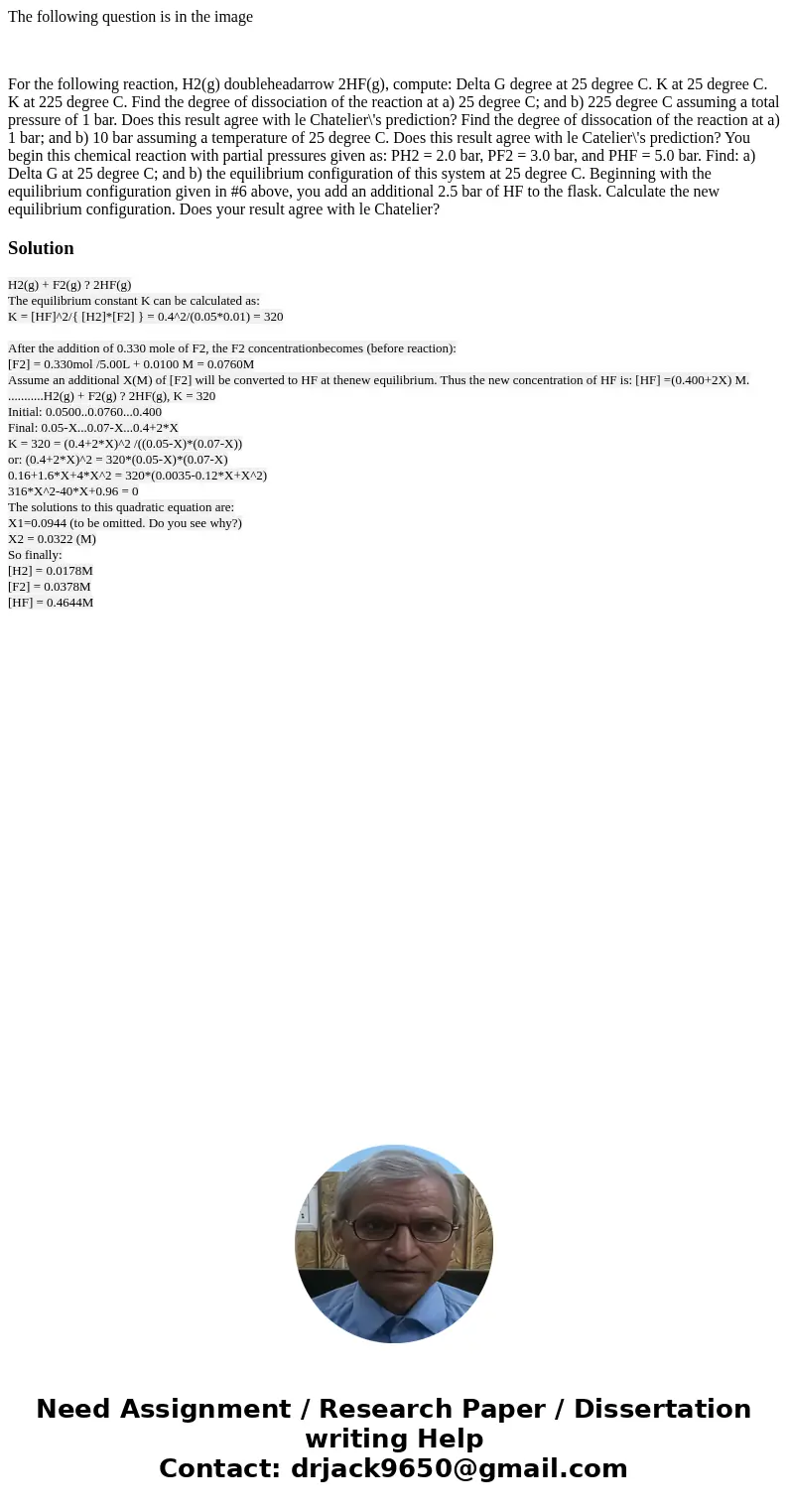The following question is in the image For the following rea
The following question is in the image
Solution
H2(g) + F2(g) ? 2HF(g)
The equilibrium constant K can be calculated as:
K = [HF]^2/{ [H2]*[F2] } = 0.4^2/(0.05*0.01) = 320
After the addition of 0.330 mole of F2, the F2 concentrationbecomes (before reaction):
[F2] = 0.330mol /5.00L + 0.0100 M = 0.0760M
Assume an additional X(M) of [F2] will be converted to HF at thenew equilibrium. Thus the new concentration of HF is: [HF] =(0.400+2X) M.
...........H2(g) + F2(g) ? 2HF(g), K = 320
Initial: 0.0500..0.0760...0.400
Final: 0.05-X...0.07-X...0.4+2*X
K = 320 = (0.4+2*X)^2 /((0.05-X)*(0.07-X))
or: (0.4+2*X)^2 = 320*(0.05-X)*(0.07-X)
0.16+1.6*X+4*X^2 = 320*(0.0035-0.12*X+X^2)
316*X^2-40*X+0.96 = 0
The solutions to this quadratic equation are:
X1=0.0944 (to be omitted. Do you see why?)
X2 = 0.0322 (M)
So finally:
[H2] = 0.0178M
[F2] = 0.0378M
[HF] = 0.4644M

 Homework Sourse
Homework Sourse